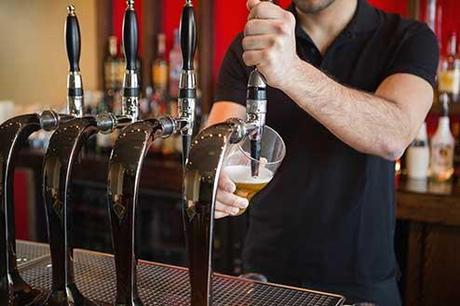Football season has arrived and with it all the familiar rituals. Tailgating. Armchair quarterbacking. Game-day celebrations. Fierce debates about who will and won’t score on the grid. But when it comes to debates, some of the biggest aren’t about players, teams or games, but another season opener: beer.
There are arguments for and against whether brews should be served chilled or not. Whatever your position, whether you’re drinking or handling the beer transportation, temperature matters – especially as the craft beer movement continues to take beer sales to new heights.
In the last 10 years, beer stock keeping units (SKU) jumped from 300 to more than 1,000[1]. As super-premium and craft beers sales soar, big brewers are expanding their premium offerings. Bottom line: now, more than ever, it’s important to know how to drink and move beer.
You’ve been served: cold or warm?
The online site for folks passionate about beer, “Everything on Tap” recently published a story about how to serve beer at the perfect temperature. We Americans, as a rule, enjoy our beverages at Arctic temperatures. Our European counterparts, however, are perfectly content drinking their beverages warm; whether it’s Coca-Cola Light, ales or lagers.
Bottom line, it’s all a matter of preference. The cold, hard truth is that some beers are meant to be served warm. In fact, there are real guidelines for pouring the perfectly chilled or un-chilled beer. Studies show that food and drink temperature can affect taste perception. The warmer the food or drink, the better your tongue can perceive flavor. The colder the food or drink, the less your palate can discern flavor profiles.
Conclusion: serve a great beer too cold, and you might miss out on the beer’s flavor nuances. Drinking beer at the right temperature allows you to really taste the beer. Everything On Tap’s article offers this suggestion: the lighter the beer flavor, the cooler you serve it. Serve lagers (Pilsners, wheat beers, light beers) cold. Serve ales (IPAs, brown ales, amber ales and stouts) warmer. As for strong beers (think robust stouts, wild ales and barley wines) – don’t chill them at all.
You’re transporting it: refrigerated or not?
The biggest challenge for many beverage distributors isn’t temperature, but the SKU explosion that makes transporting thousands of different brands a logistics challenge. And as that SKU explosion brings a wider diversity of beers to market – some better warm and some better chilled, temperature matters for transportation too.
The latest trend is cargo-style bodies and trailers equipped with refrigeration units that provide temperature control for the beers that need it. Vehicles can be configured with partially refrigerated side-load equipment to accommodate both. Alternately, some distributors prefer to dedicate refrigerated straight trucks for cold deliveries and others for warm deliveries.
[1] Source: Supply Chain Management Review magazine.

